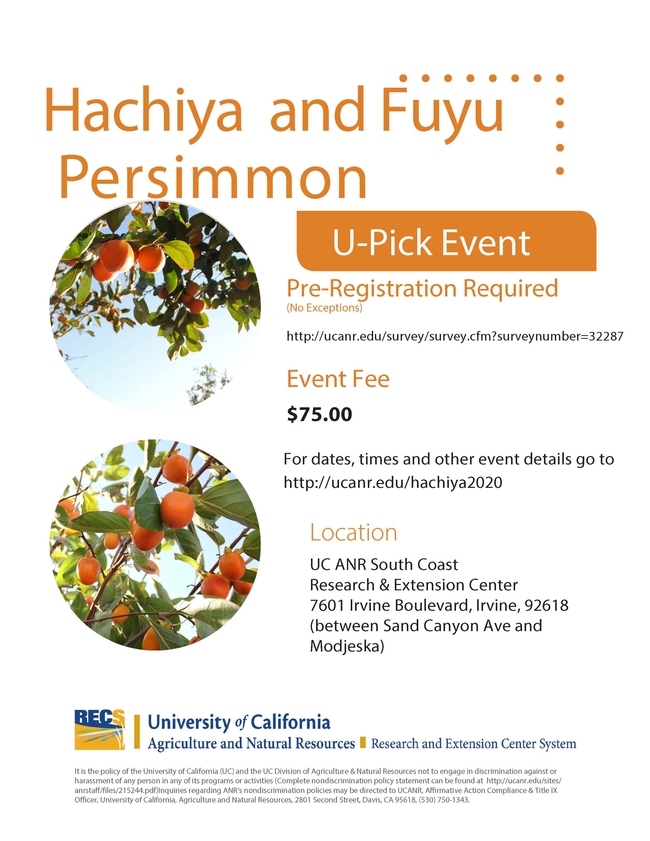- Author: petr kosina
- Editor: Tammy Majcherek
To raise awareness of pesticide safety practices, February is celebrated as National Safety Education Month. This year the University of California Statewide Integrated Pest Management Program offers help to refresh your knowledge about safe and effective pesticide use. Two frequently sought-after online courses focused on proper pesticide use to avoid illegal residues and proper selection, use, and removal of personal protective equipment are offered for free during the month of February. Use code safety100 at checkout to get your continuing education units (CEU) for free.
Pesticides are among the most regulated chemicals in the country. In the United States, the Environmental Protection Agency (EPA) regulates the use of pesticides. All pesticides must be registered with the EPA, and the agency requires a battery of scientific tests to determine the potential risk to humans and the environment.
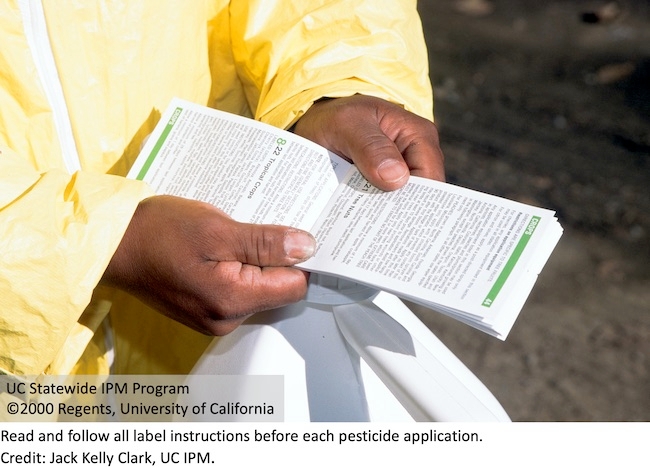
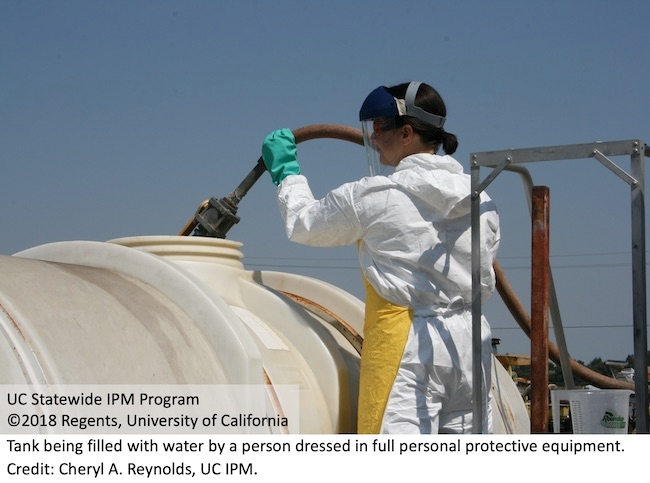
Visit the UC IPM website to see all 22 online courses that are available for continuing education credit.
- Editor: Tammy Majcherek
- Author: Cheryl Reynolds
- Author: Petr Kosina
New online course on diagnosing herbicide injury now available
—Petr Kosina, UC Statewide IPM Program
A brand-new online course on Diagnosing Herbicide Injury focusing on how an herbicide injury situation can arise, what information can help diagnose symptoms during field investigations, and what tools are available to you, is now available from the UC Statewide Integrated Pest Management program (UC IPM).
When unexplained damage is noticed on a crop or other non-weed plant, herbicides are often a primary suspect. That is no surprise because herbicides are very powerful and effective tools used to control weedy plants in a wide variety of locations. However, symptoms of many other plant stresses, such as diseases and nutrient deficiencies or toxicities, can closely resemble the injury symptoms caused by herbicides. Economic implications of herbicide damage can vary–in some cases visible injury may have very little direct economic effect while in others, even slight herbicide symptoms can affect the marketability of affected plants. In addition, the presence of an unregistered herbicide on non-target crops can result in illegal residues which could have both safety and legal consequences.
The new online course was developed by Dr. Brad Hanson and Dr. Kassim Al-Khatib from the Department of Plant Sciences at UC Davis, and UC IPM instructional designers. If you are a grower, pest control adviser, or pesticide applicator, then this course is a great opportunity to learn about how to approach crop injury investigation when herbicide is suspected cause. You will learn how herbicides injure plants, how long herbicide symptoms may last and factors that may influence the time that herbicide injury symptoms are visible, possible scenarios of herbicide exposure based on uniform and variable injury patterns observed in the field, how to prepare samples for the laboratory analysis and more.
The course content is free to anyone who wishes to view it. For those requiring a certificate of completion and continuing education units (CEUs), the regular cost is $30, but we are offering a reduced price of $15 through October 31, 2021. Diagnosing Herbicide Injury course has been approved by the California Department of Pesticide Regulation (DPR) for 1.5 continuing education units (CEU) of Other, Certified Crop Advisor (CCA) for 1.5 units (IPM), and the Arizona Department of Agriculture for 1.0 Credit.
If you are a DPR license or certificate holder with a last name beginning with letters M through Z, then this will be your year to renew. Now is a good time to check out the other UC IPM online training courses offered. All are 50% off the regular price through October 31st. DPR strongly suggests returning renewal packets back to them by October so that your license or certificate can be renewed before it expires. Many of our courses are accredited by DPR for continuing education hours and also by the California Structural Pest Control Board (SPCB), Certified Crop Advisor (CCA), the Western Chapter of the International Society of Arboriculture (WCISA), and the Arizona Department of Agriculture.
- Editor: Tammy Majcherek
- Author: Cheryl Reynolds
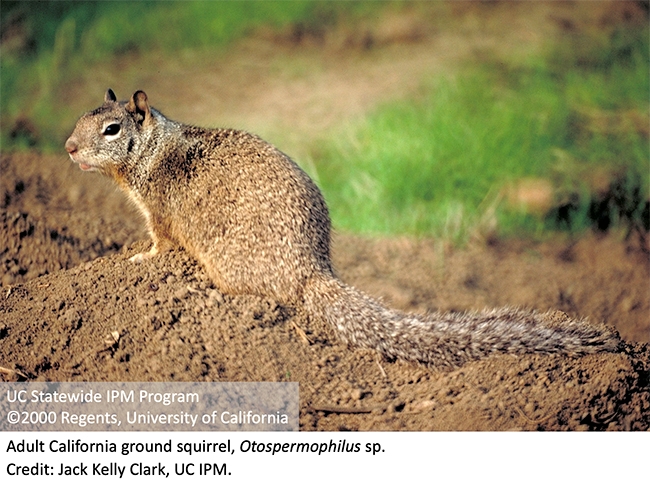
If you are a pest management professional or grower interested in vertebrate pest management, then check out this course! You'll learn about current control strategies such as habitat modification, baiting options, fumigation, and trapping. The course content is free to anyone who wishes to view it. For those requiring a certificate of completion and continuing education units (CEUs), the regular cost is $20, but we are offering a reduced price of $10 through October 31, 2021. To receive the discount, enter the code SquirrelGopher50 in the voucher box when making the payment.Managing Ground Squirrels and Pocket Gophers has been approved by the California Department of Pesticide Regulation (DPR) for 1 CEU in the Other category and also by Certified Crop Advisor (CCA) for 0.5 unit of IPM credit.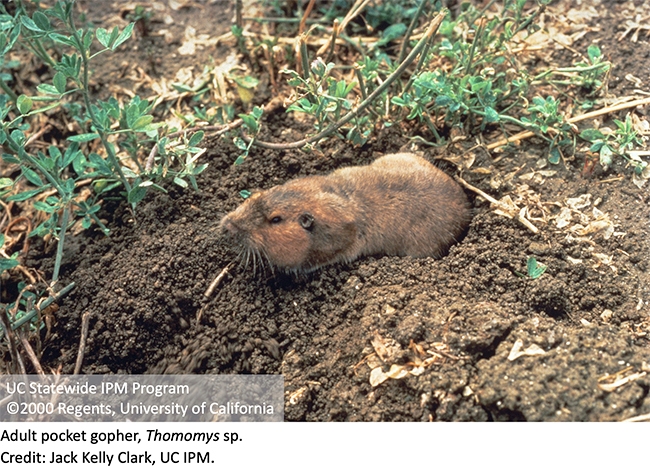
If you are a DPR license or certificate holder with a last name beginning with letters M through Z, then this will be your year to renew. Now is a good time to check out the other UC IPM online training courses offered. All are 50% off the regular price through October 31st. DPR will be sending out renewal packets in August and strongly suggests returning them by October so that your license or certificate can be renewed before it expires.
UC IPM not only offers courses accredited by DPR, but many courses are also approved by the California Structural Pest Control Board (SPCB), Certified Crop Advisor (CCA), the Western Chapter of the International Society of Arboriculture (WCISA), and the Arizona Department of Agriculture.
- Author: Tammy Majcherek
Looking for some outdoor fun and fresh fall fruit? Join us for one of the 2020 Persimmon U-Pick event sessions being held on Tuesday November 3rd, Friday November 6th, and Tuesday November 10th. Limited space available - pre-registration required.
- Author: Tammy Majcherek

But.. do you actually know the difference between the two and the purpose of each? Check out this article from the H2OC Stormwater Program and learn all about them and how you can do your part to reduce potential pollutants from entering these drain systems.

